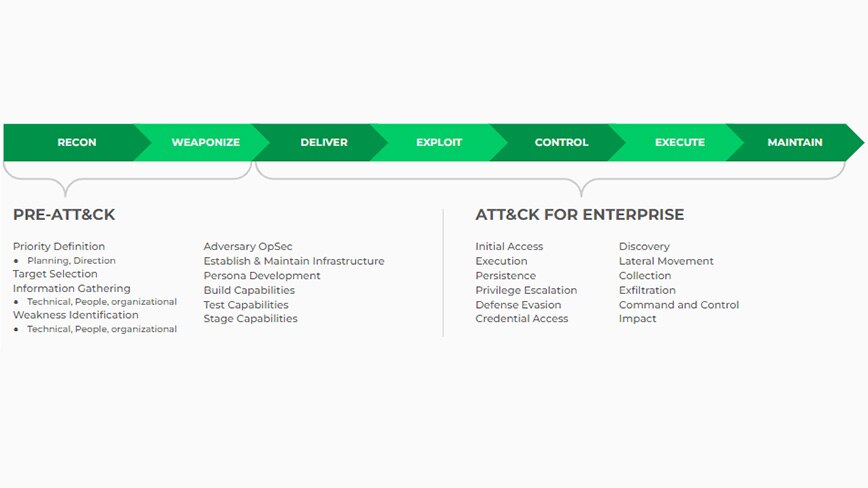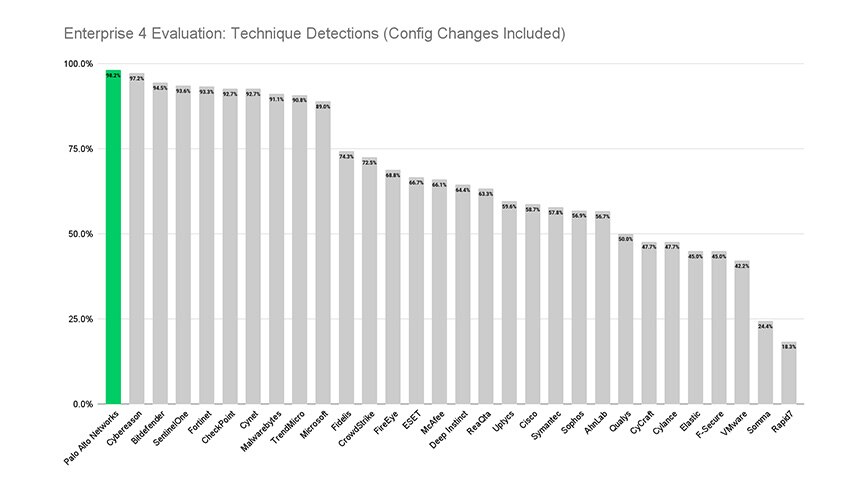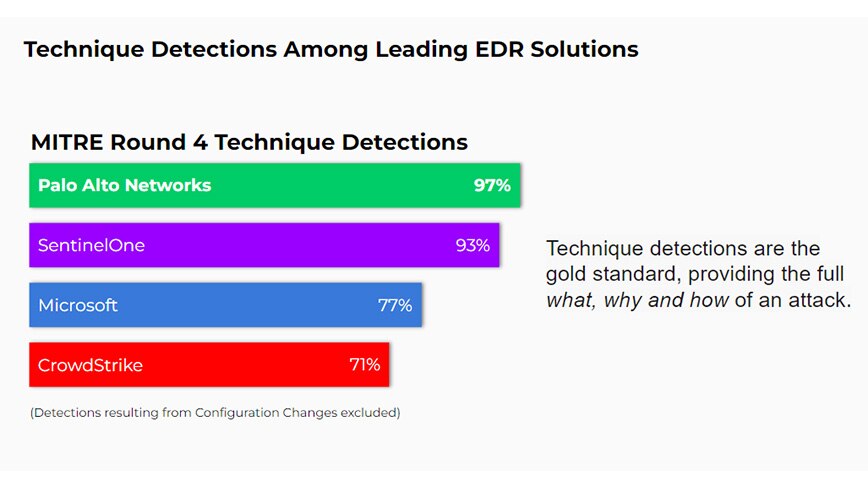- 1. MITRE ATT&CK Techniques
- 2. Mapping Cybersecurity Threats to MITRE ATT&CK Techniques
- 3. Mitigating Cyberattacks with MITRE ATT&CK Techniques
- 4. Implementing MITRE ATT&CK Techniques
- 5. What Are Technique Detections?
- 6. Comparative Analysis of MITRE ATT&CK Techniques
- 7. The Future of MITRE ATT&CK Techniques
- 8. MITRE ATT&CK Techniques FAQs
- MITRE ATT&CK Techniques
- Mapping Cybersecurity Threats to MITRE ATT&CK Techniques
- Mitigating Cyberattacks with MITRE ATT&CK Techniques
- Implementing MITRE ATT&CK Techniques
- What Are Technique Detections?
- Comparative Analysis of MITRE ATT&CK Techniques
- The Future of MITRE ATT&CK Techniques
- MITRE ATT&CK Techniques FAQs
What are MITRE ATT&CK Techniques?
- MITRE ATT&CK Techniques
- Mapping Cybersecurity Threats to MITRE ATT&CK Techniques
- Mitigating Cyberattacks with MITRE ATT&CK Techniques
- Implementing MITRE ATT&CK Techniques
- What Are Technique Detections?
- Comparative Analysis of MITRE ATT&CK Techniques
- The Future of MITRE ATT&CK Techniques
- MITRE ATT&CK Techniques FAQs
MITRE ATT&CK techniques are part of the MITRE ATT&CK framework that categorizes the methods and tactics utilized by adversaries in various stages of cyber attacks. There are currently over 300 techniques listed in the MITRE ATT&CK framework, each categorized under one of the following tactics:
1. Initial Access
2. Execution
3. Persistence
4. Privilege Escalation
5. Defense Evasion
6. Credential Access
7. Discovery
8. Lateral Movement
9. Collection
10. Exfiltration
11. Command and Control
Each technique describes a specific method or approach that attackers may use to compromise a target network or system. The techniques range from simple tactics such as phishing and brute-force attacks to more complex ones like DLL search order hijacking and process injection. Understanding the various techniques used by attackers can help organizations better defend against and respond to cyberthreats.
MITRE ATT&CK Techniques
MITRE ATT&CK techniques are a comprehensive and constantly evolving list of tactics and techniques used by cyberattackers. The techniques are organized into 11 categories or tactics that represent the different stages of a cyberattack.
These tactics are designed to help organizations better understand the different ways that attackers can compromise their networks or systems. The techniques provide a common language for describing and sharing threat intelligence and can be used to improve security by identifying and addressing vulnerabilities in an organization's defenses.
The following is a brief overview of each tactic:
- Initial Access is used to gain the first foothold on a target system or network, such as phishing or exploiting vulnerabilities.
- Execution is used to run malicious code on a target system, such as running a malware payload or exploiting a vulnerability to execute code.
- Persistence is used to maintain a foothold on a system, such as creating a new user account or installing a backdoor.
- Privilege Escalation is used to obtain higher levels of access to a system, such as exploiting a vulnerability or stealing credentials.
- Defense Evasion is used to avoid detection by security tools or defenders, such as obfuscating code or using antivirus evasion techniques.
- Credential Access is used to obtain valid user credentials, such as stealing passwords or using brute-force attacks.
- Discovery is used to gather information about a target system or network, such as scanning for open ports or enumerating user accounts.
- Lateral Movement is used to move laterally within a network, such as exploiting vulnerabilities or using stolen credentials to access other systems.
- Collection is used to gather data or information from a target system or network, such as keylogging or screenshotting.
- Exfiltration is used to copy data or information from a target system or network to an outside source. This exfiltrated data can then be used as proof of exploit, or for extortion.
- Command and Control is used to maintain a connection and communicate with a compromised system or network, such as using a remote access tool or a command-and-control server.
MITRE ATT&CK Framework
The MITRE ATT&CK framework has become the standard for how the security world communicates about adversaries and their techniques. It provides organizations with a way to better understand the techniques that attackers use during a cyberattack and can help them develop better defenses and incident response plans. “ATT&CK” stands for Adversarial Tactics, Techniques & Common Knowledge. The framework provides:
- Detailed information about all the adversarial techniques.
- Details of threat groups that have used these techniques.
- Useful information about how to detect and mitigate these tactics and techniques.

Mapping Cybersecurity Threats to MITRE ATT&CK Techniques
Mapping cybersecurity threats to MITRE ATT&CK techniques involves identifying which techniques were used by the threat actor during a cyberattack. This mapping process can help security teams understand the tactics and techniques employed by attackers and identify gaps in their defenses.
Here are the general steps for mapping cybersecurity threats to MITRE ATT&CK techniques:
- Collect threat intelligence. This involves gathering information about the threat actor, their tools and infrastructure, and the methods they used to carry out the attack.
- Identify the attack stages. Break down the attack into stages or phases, such as initial access, execution, persistence and so on. This helps identify the specific techniques used by the attacker.
- Map the techniques to the framework. Using the information gathered in step 1 and step 2, map the specific techniques used by the attacker to the appropriate tactic in the MITRE ATT&CK framework.
- Analyze the results. Analyze the mapped techniques to identify any trends or patterns that could help improve defenses or response plans.
- Update defenses and response plans. Use the results of the analysis to update security controls and response plans to better defend against similar attacks in the future.
Mapping cybersecurity threats to MITRE ATT&CK techniques is an ongoing process that requires continuous threat intelligence gathering, analysis, and updates to defenses and response plans.

Mitigating Cyberattacks with MITRE ATT&CK Techniques
MITRE ATT&CK techniques can be used to help organizations by identifying potential vulnerabilities and implementing appropriate defenses. Here are some ways that MITRE ATT&CK techniques can be used to help mitigate cyberattacks:
Understand the Threat Landscape
By using the MITRE ATT&CK framework to map the techniques used by threat actors, organizations can gain a better understanding of the threats they face and the tactics and techniques used by attackers.
Identify Gaps in Security Controls
Mapping threats to the MITRE ATT&CK framework can help identify gaps in security controls that attackers could exploit. By understanding which techniques are most likely to be used, organizations can prioritize their defenses and focus on the areas most at risk.
Strengthen Defenses
Organizations can use the MITRE ATT&CK framework to identify the most effective security controls to defend against specific techniques used by attackers. For example, if attackers commonly use phishing attacks to gain initial access, organizations can implement stronger email filters or conduct security awareness training to reduce the likelihood of successful phishing attacks.
Develop Incident Response Plans
By mapping threats to the MITRE ATT&CK framework, organizations can develop incident response plans that are tailored to specific attack scenarios. This can help reduce response times and minimize the impact of an attack.
Continuous Improvement
MITRE ATT&CK is constantly evolving as new techniques and tactics emerge. By continuously mapping threats to the framework, organizations can keep their defenses up to date and adapt to new threats as they arise.

Implementing MITRE ATT&CK Techniques
Implementing MITRE ATT&CK techniques involves a few key steps, including the following:
- Understand the framework. Before implementing MITRE ATT&CK techniques, it is important to understand the framework and its different components. This includes understanding the 11 tactics, the techniques within each tactic, and the sub techniques within each technique.
- Map threats to techniques. Once you have a solid understanding of the framework, the next step is to map specific cyberthreats to the appropriate techniques within the framework. This involves using threat intelligence to identify the techniques that are most commonly used by threat actors targeting your organization.
- Identify security gaps. Once you have mapped threats to techniques, you can identify any gaps in your current security controls. This can include gaps in prevention, detection and response capabilities.
- Prioritize defenses. Based on the threat landscape and identified gaps in your security controls, you can prioritize your defenses to focus on the most critical areas of risk. This may involve implementing new security controls, enhancing existing controls or investing in additional training and education.
- Monitor and improve. Implementing MITRE ATT&CK techniques is an ongoing process that requires continuous monitoring and improvement. This includes monitoring for new threats, testing the effectiveness of existing defenses and updating defenses as needed.
- Share and collaborate. Finally, it is important to share information and collaborate with others in the industry to improve overall cyber defenses. This may involve sharing threat intelligence, collaborating on incident response or participating in industry-specific working groups.
Overall, implementing MITRE ATT&CK techniques requires a comprehensive and continuous approach to cybersecurity that includes understanding the framework, mapping threats to techniques, identifying gaps in security controls, prioritizing defenses, monitoring and improving, and collaborating with others in the industry.
What Are Technique Detections?
MITRE ATT&CK technique detections are a way to identify and respond to cyberattacks using the MITRE ATT&CK framework. The framework includes a list of techniques that attackers might use, such as spear phishing, command and control, and credential dumping.
To detect attacks that use these techniques, security teams can use a variety of methods, including network monitoring, endpoint detection and response, and security information and event management (SIEM) systems. By monitoring for indicators of compromise associated with known attack techniques, security teams can detect and respond to attacks more quickly.
For example, if an attacker is using a known technique such as credential dumping to steal passwords from a compromised endpoint, a security team can detect this activity by monitoring for suspicious activity on the endpoint and analyzing logs and network traffic. By quickly detecting and responding to these attacks, organizations can reduce the damage caused by cyberthreats and better protect their data and systems.

Comparative Analysis of MITRE ATT&CK Techniques
A comparative analysis of MITRE ATT&CK techniques can help organizations understand the relative effectiveness of different techniques in defending against cyberattacks. Here are some factors that can be considered in a comparative analysis:
- Detection rate: The detection rate of a technique refers to how effective it is in detecting or blocking an attack. Some techniques may be more effective than others in detecting or blocking specific types of attacks.
- Complexity: The complexity of a technique refers to how difficult it is to implement and maintain. More complex techniques may require more resources and expertise to implement and maintain.
- Cost: The cost of a technique refers to the financial investment required to implement and maintain it. Some techniques may be more expensive than others, which can be a factor in deciding which techniques to prioritize.
- False positive rate: The false positive rate of a technique refers to the rate at which it generates false positives or identifies benign activity as malicious. High false positive rates can be problematic as they can lead to unnecessary alerts and drain resources.
- Contextual relevance: The contextual relevance of a technique refers to how relevant it is to the specific threat landscape and business environment of the organization. Some techniques may be more relevant to certain industries or types of organizations than others.
- Maturity level: The maturity level of a technique refers to how widely it is adopted and how much community support exists around it. More mature techniques may have better documentation, more available tooling and more community support.
When conducting a comparative analysis of MITRE ATT&CK techniques, it is important to consider all of these factors and how they apply to the specific threat landscape and business environment of the organization. By understanding the relative effectiveness and costs of different techniques, organizations can make informed decisions about which techniques to prioritize in their cybersecurity defenses.
The Future of MITRE ATT&CK Techniques
The future of MITRE ATT&CK techniques looks promising as the framework continues to evolve and gain wider adoption in the cybersecurity industry. Here are some potential future developments and trends to watch:
- Expanded coverage: MITRE is continually updating and expanding the framework to cover more techniques and tactics. As new threat vectors emerge, it is likely that the framework will continue to evolve to cover them.
- Integration with other frameworks: MITRE ATT&CK may become more integrated with other frameworks and standards, such as NIST Cybersecurity Framework, ISO 27001 and CIS Controls. This could help provide a more comprehensive approach to cybersecurity for organizations.
- Increased automation: As more organizations adopt MITRE ATT&CK techniques, it is likely that there will be an increased focus on automation and tooling to help with implementation and maintenance of the framework. This could help organizations more efficiently and effectively implement the framework.
- More industry-specific mapping: As more industries adopt the framework, there may be an increased focus on industry-specific mapping of threats to techniques. This could help provide more targeted guidance for organizations in specific industries.
- Enhanced collaboration: As the framework gains wider adoption, there may be increased collaboration and sharing of threat intelligence among organizations. This could help improve overall cyber defenses and create a more resilient cybersecurity ecosystem.